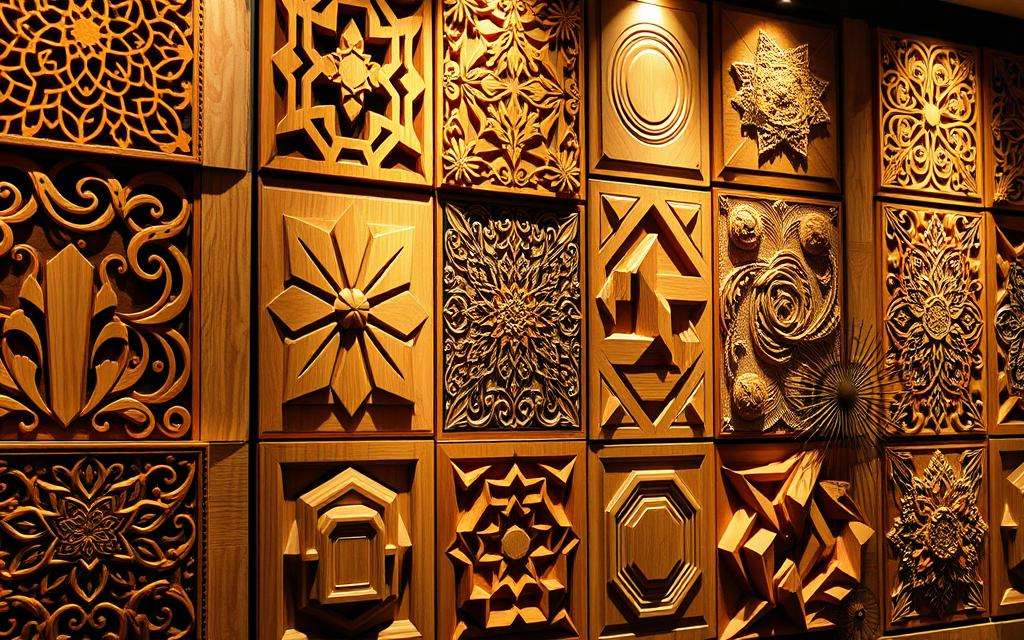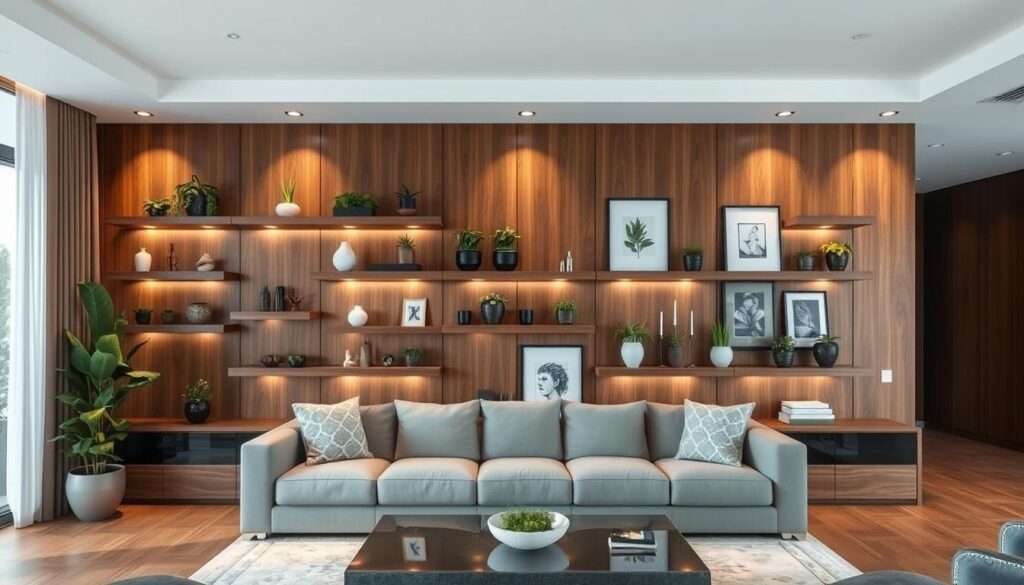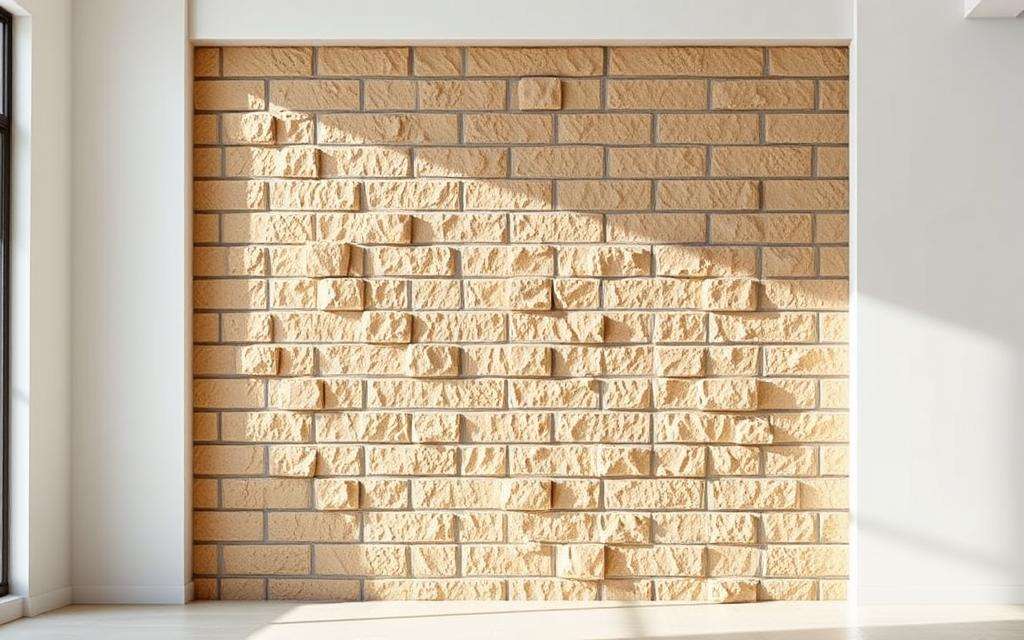When you enter a room, the walls are the first thing you notice is the the decorative wood panels for walls that set the mood and style, making you want to stay. Imagine turning those empty walls into warm, character-filled canvases with wood panels. Decorative Wood Panell for Walls is more than a trend; it’s a classic choice that brings life to any space. It works well in modern, rustic, or mixed styles.
Key Takeaways
- Wood panels for wall decor add depth and texture to any room.
- They blend timeless appeal with modern design versatility.
- Wood paneling for home decor enhances aesthetics while improving air quality and insulation.
- Options range from sleek contemporary styles to rustic, natural looks.
- Easy to customize, they fit budgets and skill levels—from DIY projects to professional installations.
The Timeless Appeal of Decorative Wood Panels for Walls
Wood panels have been a staple in homes for centuries. They’ve gone from colonial-era dining rooms to modern lofts. Their lasting appeal comes from their ability to adapt. Traditional wood paneling now inspires modern, sleek designs.
| Traditional Uses | Modern Applications |
|---|---|
| Victorian-era detailing | Industrial-style accent walls |
| Colonial-era dining rooms | Urban minimalist spaces |
| 19th-century parlor walls | Modern open-concept living areas |
Today, designers mix rustic and modern styles for a unified look. Wood panels now combine with sleek metal for a fresh feel. This shows how wood paneling stays relevant while keeping its essence.
Every year, new materials like bamboo and charred cedar join the mix. These choices meet today’s green trends while keeping tradition alive. Homeowners get a timeless look that stands the test of time.
Architectural Digest highlights wood’s unique ability to warm up a space without overwhelming it. Its versatility makes wood paneling a favorite for both historic updates and modern designs.
Exploring Decorative Wood Panels for Walls
Decorative wood panell for walls come in many forms, each with its own style and function. You can find everything from classic to modern designs. The materials vary to fit every taste and budget. You can choose from solid hardwood, engineered wood, reclaimed wood, or MDF with wood veneers.
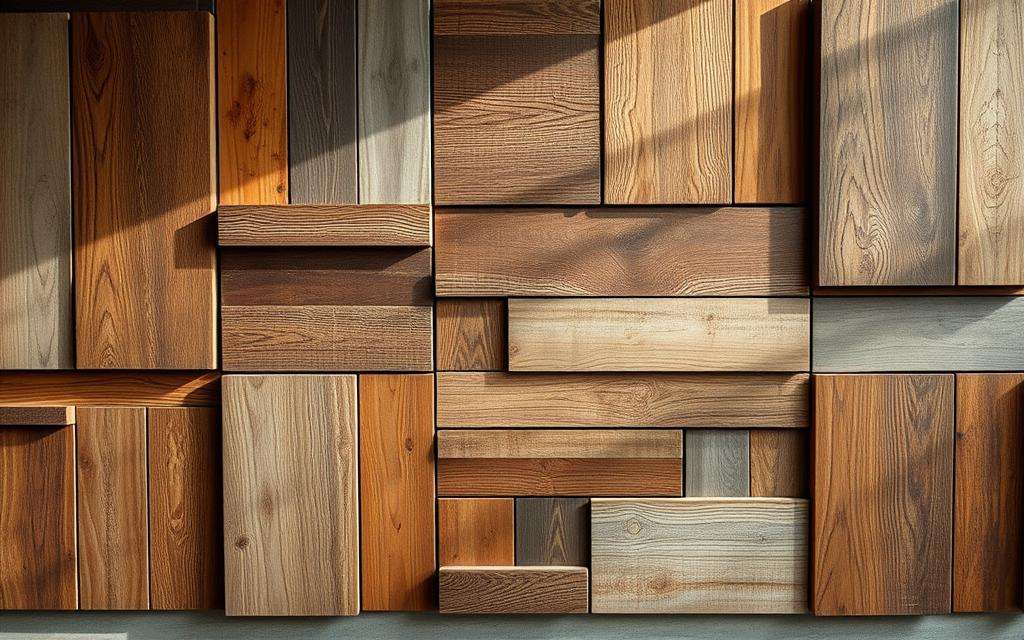
- Solid hardwood: Durable options like oak or walnut offer natural grain patterns and last long. They are perfect for places that get a lot of use.
- Engineered wood: Made from layers of wood fibers, these panels are affordable and stable. They don’t warp or change with humidity.
- Reclaimed wood: Using old materials adds a rustic touch. Barnwood or vintage planks bring history and charm to any space.
- MDF with veneers: These panels are light and easy on the wallet. They look like wood but are made from composite materials.
Custom wood paneling lets you design exactly what you want. You can shape panels into patterns, stain them any color, or add lights for a wow factor. Popular choices include pine, mahogany, and bamboo, each with its own look and feel.
“Custom wood paneling isn’t just about material—it’s storytelling through texture and color,” says interior designer Maria Torres.
Whether you want a distressed look for a farmhouse kitchen or sleek maple for a modern loft, you have options. These choices let you find the perfect balance between beauty and function. Exploring these types helps you find what fits your style and needs.
Benefits of Incorporating Wood Paneling in Home Design
Wood paneling adds more than just beauty to homes. It brings warmth, texture, and lasts long, making it a top pick for interior design. Homeowners see how wood turns rooms into both useful and stylish spaces.
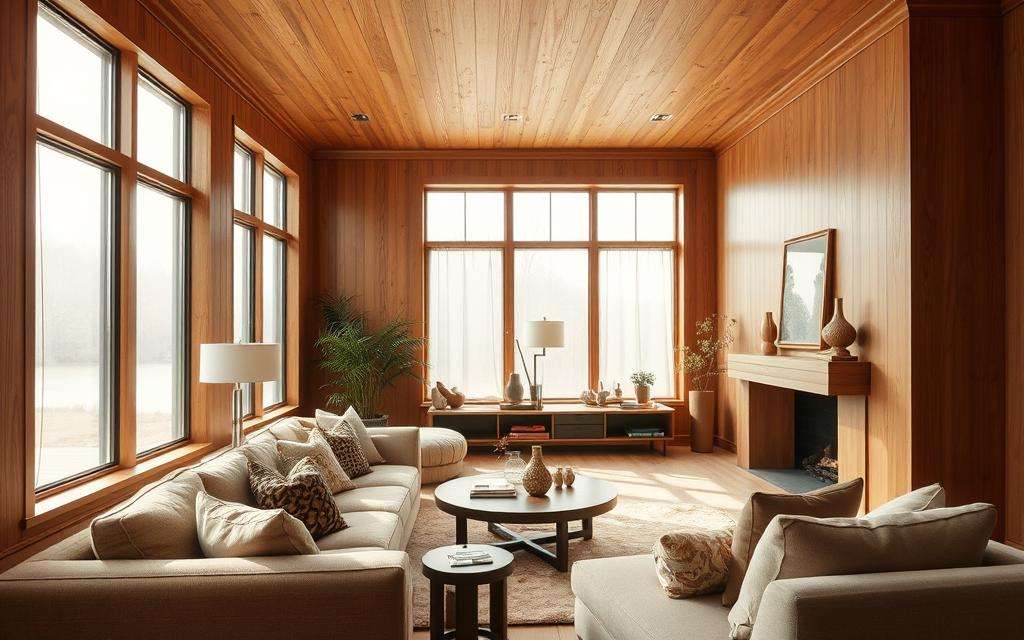
- Enhanced comfort: Wood keeps rooms at a comfortable temperature, saving on energy costs.
- Acoustic improvement: Solid wood absorbs sound, making rooms quieter for fun or calm.
- Timeless aesthetic: Its natural look fits with both modern and classic styles, lasting for years.
Wood paneling also increases a home’s value. Materials like oak or pine are tough and need little care. Unlike fake materials, wood can change with trends through stains or finishes. This makes it a smart choice that looks good for a long time.
Modern Decorative Wood Panels for Walls: Contemporary Designs for Today’s Homes
Modern wood wall panels are changing how we see interior design. They mix old traditions with new ideas. Architects and designers use wood accent wall panels to make bold statements in any style of home.
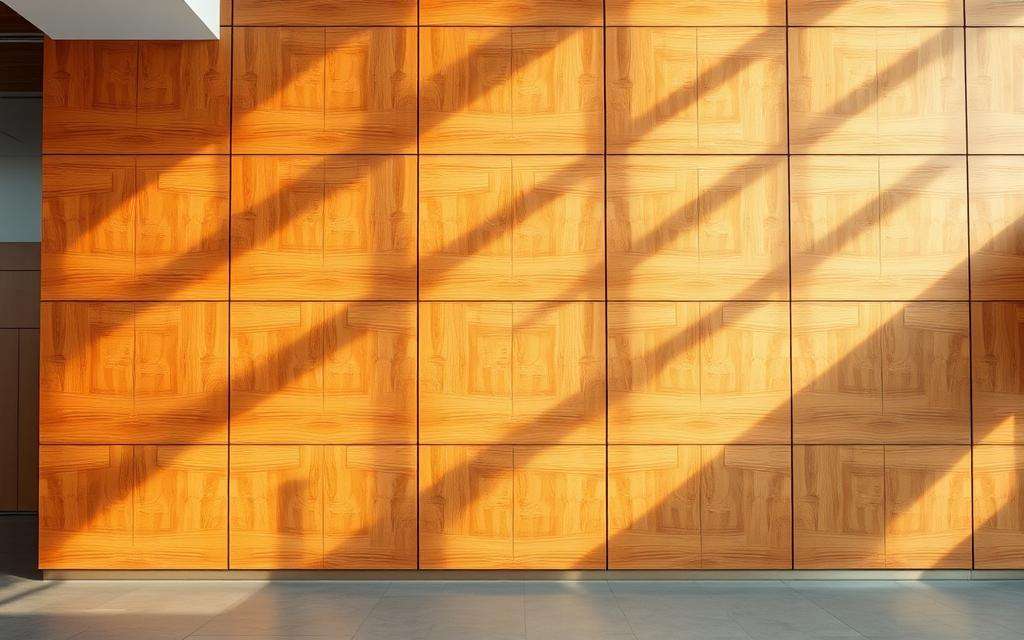
They pair wood with materials like brushed metal, frosted glass, or concrete. This mix adds a modern touch to wood’s natural warmth. Today’s trends include:
- Slatted panels in diagonal patterns
- 3D-carved patterns that look like real wood grain
- Lightweight engineered wood veneers for curved surfaces
| Design Style | Key Features |
|---|---|
| Minimalist | Uniform horizontal/vertical layouts |
| Industrial | Rough-sawn edges with metallic brackets |
| Scandinavian | Soft curves and light-stained finishes |
Now, you can add your own style with glow-in-the-dark stains or laser-etched patterns. Stores sell modular systems for easy DIY projects. This makes modern wood paneling easy to use and change your living space.
Rustic Decorative Wood Panels for Walls: Bringing Natural Charm Indoors
Rustic wood wall panels bring a touch of nature indoors. They often use reclaimed barn wood or weathered planks from old buildings. Each mark tells a story of time and use.
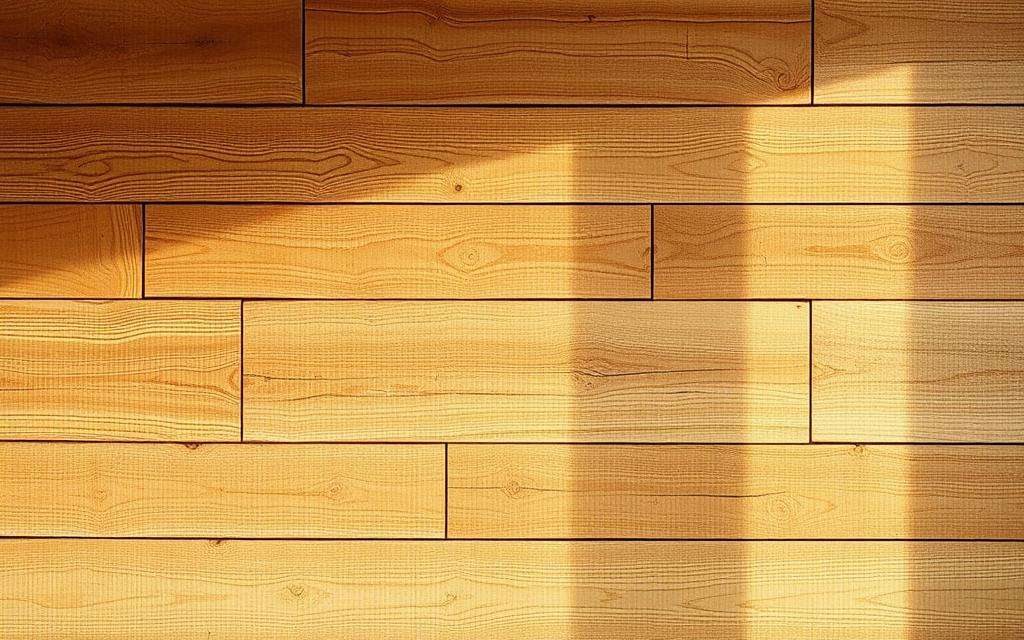
The textured look of rustic wood adds depth to any room. Distressed finishes show off natural flaws like nail holes and knots. This creates a warm feel that modern materials can’t match. Designers suggest pairing rustic wood with neutral colors to highlight its beauty.
- Reclaimed pine planks evoke farmhouse charm
- Weathered oak adds rustic appeal to contemporary spaces
- Exposed nail heads emphasize artisanal craftsmanship
Rustic wood panels fit any style, from cozy cabins to urban lofts. In kitchens, they add charm to island frames. Bathrooms get a cabin feel with paneling around vanities. Urban spaces use them as accent walls to contrast with sleek furniture.
The natural imperfections of rustic wood panels make spaces feel real and lived-in. They offer a timeless contrast to cold, sterile designs.
Creating a Stunning Decorative Wood Panels for Walls: Design Principles and Ideas
Designing a wood accent wall is all about looks and function. First, pick the right wood accent wall panels that fit your room’s style. Place them on walls opposite windows or behind seats for the best view.
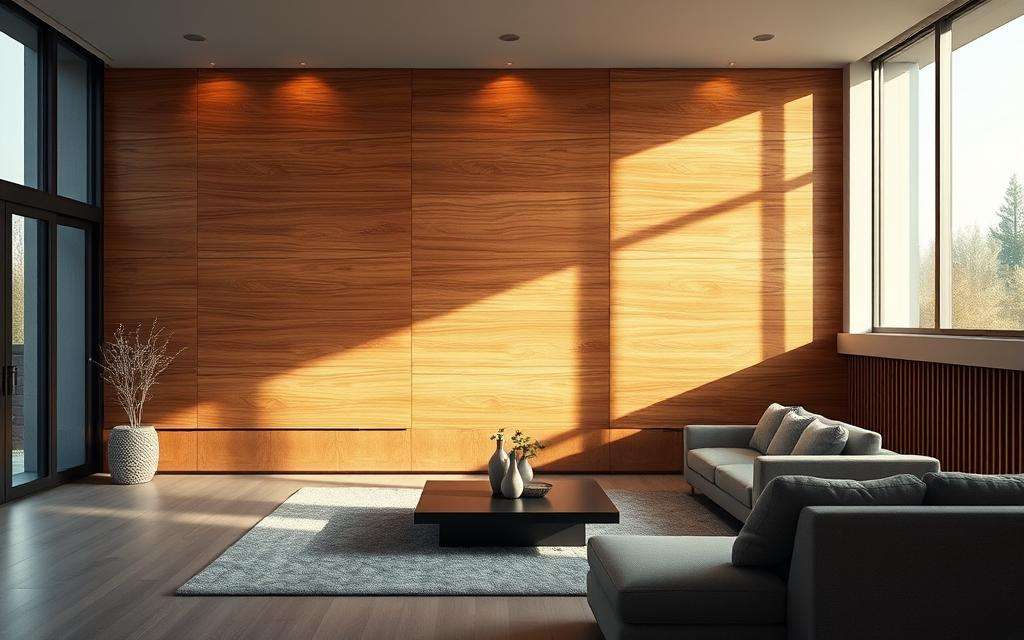
- Scale matters: Choose panel sizes that match your room’s size. Big rooms look great with wide planks, while small spaces do better with narrow strips.
- Balance with furnishings: Mix light wood paneling for home decor with dark furniture or the other way around for contrast.
- Lighting: Use recessed lights or sconces to highlight the wood’s natural grain.
“A well-designed accent wall should feel like the room’s heartbeat, not an afterthought.” — Interior Designer Clara Bennett
Be creative with how you install the panels. Try mixing vertical and horizontal planks for a cool look or stagger them for depth. For a rustic feel, use distressed wood. Modern homes look sleek with polished finishes.
Think about adding useful features like built-in shelves or hidden storage. LED strips behind the panels can make the wall glow at night. Make sure the wood color matches nearby decor, like side tables or frames.
DIY Wood Wall Decor: Projects for Every Skill Level
Transform walls with DIY wood wall decor projects for all skill levels. Beginners can start with pre-made custom wood paneling. It installs quickly with basic tools.
Pallet planks nailed in geometric patterns add texture. You don’t need advanced carpentry skills for this.
- Beginner Projects: Hang slatted panels using a nail gun. Or arrange driftwood slices in a gallery wall. Stain or paint to match room colors.
- Intermediate Steps: Create staggered plank arrangements with a miter saw. Sand edges smooth and apply waterproof sealant for kitchens or bathrooms.
- Advanced Builds: Design custom wood paneling with detailed joinery. Install floating shelves into panels for functional art. Or carve repeating patterns with a router.
Tools range from staple guns for easy setups to table saws for precise cuts. Time varies: a beginner project might take two hours. Custom paneling could span a weekend.
Online tutorials and pre-cut kits from brands like Home Depot or Lowe’s make it easier. Every project builds confidence. Start small, then level up—walls become canvases for creativity and savings.
With patience, even first-time crafters can master DIY wood wall decor. It feels like a professional upgrade.
Professional Installation vs. Self-Installation: What to Consider
Deciding between hiring a pro or doing it yourself for wood panels for wall decor depends on your skills, time, and the project’s size. Thinking about these points will help you choose the best option for interior design wood paneling.
- Ask: Can I handle precise measurements and tool use?
- Consider: Project complexity and desired finish quality.
- Factor in: Hidden costs like materials or possible mistakes.
| Factor | Professional Installer | Self-Installer |
|---|---|---|
| Cost | Includes labor and expertise | Lower upfront but risks redoing work |
| Time | Typically 1–3 days for pros | Varies; may take longer for novices |
| Tools | Professional-grade equipment | Basic tools needed (saws, drills, levels) |
Professionals ensure accuracy, perfect for interior design wood paneling with unique cuts. DIY is better for simple tasks like peel-and-stick panels. Look for contractors through referrals or online reviews. Get quotes from at least three to avoid overpaying.
Make your choice based on what matters most to you. Whether you hire someone or do it yourself, wood panels for wall decor bring warmth and style. The right choice turns your dream into reality without any regrets.
Conclusion: Transforming Your Space with the Beauty of Wood
Wood wall decor adds more than style; it brings warmth and character to spaces. You can choose sleek panels for modern rooms or rustic ones for cozy areas. Keeping them clean and protected ensures they stay beautiful over time.
Choosing wood paneling means embracing a material that grows more beautiful with age. Its natural look changes as it gets older, making each piece unique. Whether you do it yourself or hire a pro, there’s a way to fit your vision.
Wood panels are not just for looks; they also improve sound quality and add texture. They can be the centerpiece of a room without taking over. They work well in dining areas or home offices, bringing nature inside.
Using wood in your home is about more than looks; it’s about creating a space that feels alive. Wood’s natural feel makes rooms feel cozy and personal. Start with a small accent wall or go all in; every choice celebrates beauty and craftsmanship.
FAQ
What types of wood panels are best for wall decor?
For wall decor, solid hardwood, engineered wood, reclaimed wood, and MDF with wood veneers are top choices. Each has its own look and feel. Solid wood is natural and beautiful, while engineered and reclaimed wood offer unique designs.
How do I choose the right wood paneling style for my home?
Pick the right style by thinking about your home’s look and the mood you want. Modern panels are sleek, while rustic ones add warmth. Custom panels can also match your personal style.
Can I install wood paneling myself?
Yes, you can install wood paneling yourself, like with DIY projects. But, check if you’re up for the task. For complex designs, getting a pro might be better.
What are the benefits of using wood paneling in interior design?
Wood paneling brings warmth and texture to rooms. It also improves insulation and sound quality. Plus, it adds character and timeless beauty to your space.
How can I incorporate rustic wood wall panels into my modern home?
Mix rustic wood panels with modern decor for a cool contrast. Use them as accent walls or with modern furniture. Weathered finishes and reclaimed wood add natural charm to modern spaces.
What maintenance is required for wood paneling?
Clean wood paneling regularly with a soft cloth. Polish it sometimes to keep the finish. Also, use protective treatments to prevent damage from moisture or sunlight.
Are custom wood paneling options available?
Yes, you can get custom wood panels to match your design. Suppliers offer many wood types, finishes, and patterns. This way, you can create panels that are truly yours.
What trends are prominent in modern wood wall panel designs?
Modern trends include geometric patterns, three-dimensional designs, and mixing materials like metal and glass with wood. These new ideas make wood paneling fresh and exciting.
Can wood panels improve my home’s energy efficiency?
Yes, wood panels can make your home more energy-efficient. They provide good insulation, keeping rooms at a steady temperature. This can save you money on heating and cooling.
How do I design a stunning wood accent wall?
To design a stunning accent wall, choose the right wall and consider scale and proportion. Make sure the wood fits with the room’s decor. Adding features like shelves or lights can make it even more appealing.
